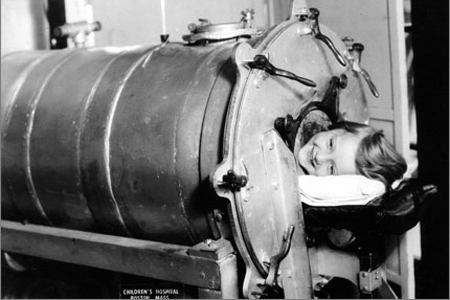Lung Regeneration Getting Closer To Being Reality. Smoke Up!

Smoking is fun. It makes you smell great, your teeth shine, and your cool factor goes off the chart. The only problem is that it does a fucking number on your lungs. Soon those of us who suffer from lung ailments either from being super awesome and smoking or from other maladies may be in luck. Lung regeneration? Go!
In the Oct. 28 issue of the journal Cell, the research team reports that they have uncovered the biochemical signals in mice that trigger generation of new lungalveoli, the numerous, tiny, grape-like sacs within the lung where oxygen exchange takes place. Specifically, the regenerative signals originate from the specialized endothelial cells that line the interior of blood vessels in the lung.
While it has long been known that mice can regenerate and expand the capacity of one lung if the other is missing, this study now identifies molecular triggers behind this process, and the researchers believe these findings are relevant to humans.
“Several adult human organs have the potential upon injury to regenerate to a degree, and while we can readily monitor the pathways involved in the regeneration of liver and bone marrow, it is much more cumbersome to study the regeneration of other adult organs, such as the lung and heart,” says the study’s lead investigator, Dr. Shahin Rafii, who is the Arthur B. Belfer Professor of Genetic Medicine and co-director of the Ansary Stem Cell Institute at Weill Cornell Medical College.
“It is speculated, but not proven, that humans have the potential to regenerate their lung alveoli until they can’t anymore, due to smoking, cancer, or other extensive chronic damage,” says Dr. Rafii, who is also an investigator at the Howard Hughes Medical Institute. “Our hope is to take these findings into the clinic and see if we can induce lung regeneration in patients who need it, such as those with chronic obstructive pulmonary disease (COPD).”
“There is no effective therapy for patients diagnosed with COPD. Based on this study, I envision a day when patients with COPD and other chronic lung diseasesmay benefit from treatment with factors derived from lung blood vessels that induce lung regeneration,” states Dr. Ronald G. Crystal, who is a co-author of this study and professor of pulmonary and genetic medicine at Weill Cornell.
Dr. Rafii and his researchers had previously uncovered growth factors that control regeneration in the liver and bone marrow, and in both cases, they found that endothelial cells produce the key inductive growth factors, which they defined as “angiocrine factors.” In the current lung study, they discovered the same phenomenon — that blood vessel cells in the lungs jump-start regeneration of alveoli. “Blood vessels are not just the inert plumbing that carries blood. They actively instruct organ regeneration,” says Dr. Rafii. “This is a critical finding. Each organ uses different growth factors within its local vascular system to promote regeneration.”
To conduct this study, Dr. Bi-Sen Ding, a postdoctoral fellow in Dr. Rafii’s lab and the first author of this paper, removed the left lungs of mice and studied the biochemical process of subsequent regeneration of the remaining right lung. Previous pioneering work by Dr. Crystal had shown that when the left lung of mice is removed, the right lung regenerates by 80 percent, effectively replacing most of the lost alveoli. “This regeneration process also restores the physiological respiratory function of the lungs, which is mediated by amplification of various epithelial progenitor cells and regeneration of the alveolar sacs,” says Dr. Ding.
“This regenerative phenomenon, however, only occurs after a trauma that abruptly reduces lung mass. Then the specific subsets of blood vessels in the remaining lung receive a message to start to repopulate alveoli, and our job was to find that signal,” says Dr. Daniel Nolan, a senior scientist in this project who developed methods to characterize the lung blood vessel cells.
The scientists found that removal of the left lung activates receptors on lung endothelial cells that respond to vascular endothelial growth factor (VEGF) and basic fibroblast growth factor (FGF-2). Activation of these receptors promotes the rise of another protein, matrix metalloproteinase-14 (MMP14). The researchers discovered that MMP14, by releasing epidermal growth factors (EGF), initiates the generation of new lung tissue.
Fucking science. Hell yeah.
—-



